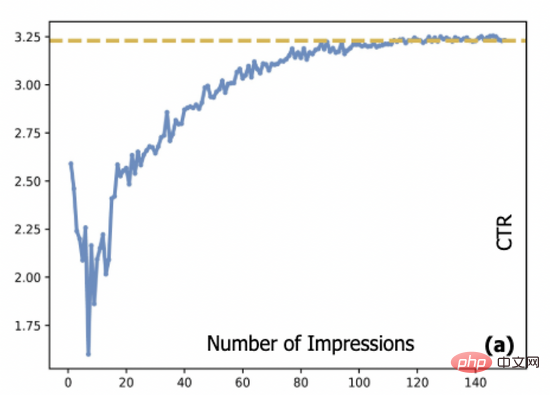Java is currently the most popular programming language. Its powerful cross-platform features and rich class libraries allow developers to easily implement various applications. Machine translation technology is an important branch in the field of artificial intelligence. Its application has penetrated into fields such as web page translation and machine translation software, and has become one of the indispensable translation tools in modern society. This article mainly introduces machine translation technology implemented in Java and its application.
1. Machine translation technology
Machine translation technology refers to the technology that uses computer programs to automatically translate a natural language text into another language. Different from traditional human translation, machine translation uses artificial intelligence algorithms and natural language processing technology to achieve large-scale, automated translation tasks, and can achieve real-time translation, greatly improving the efficiency and accuracy of translation. Machine translation technology mainly includes the following types:
- Rule-based machine translation technology
Rule-based machine translation technology uses existing grammar and vocabulary knowledge to translate Text technology. The basic idea is to analyze and manage the source language and target language respectively, and then translate them according to certain rules. Although this method can provide higher translation quality, it requires a lot of time and labor costs, and its scope of application is relatively narrow.
- Statistical machine translation technology
Statistical machine translation technology is a technology that uses existing language data to perform translation based on statistical algorithms. The basic idea is to use a large number of bilingual corpora to translate texts through statistical analysis. This method can be adapted to different fields and different types of languages, and can achieve self-training, but it requires a large amount of data for training, and its translation quality still needs to be improved.
- Neural network-based machine translation technology
Neural network-based machine translation technology is a technology that uses deep learning algorithms for automatic translation. The basic idea is to learn and transform the mapping relationship between the source language and the target language by establishing a multi-layer neural network. This method can adapt to different fields and languages and has strong adaptive capabilities, but its training cost is large and requires a lot of computing resources and time.
2. Machine translation technology implemented in Java
Java is a high-level programming language with strong programming capabilities and cross-platform features. It currently has a wide range of applications in various software development fields. application. Machine translation technology implemented in Java can implement various machine translation algorithms based on statistical machine learning, neural network and other models by using the class libraries and frameworks provided by Java itself.
- Machine translation technology based on Lucene
Lucene is a full-text search engine implemented in Java language, which can be used for tasks such as text indexing, retrieval, and statistical analysis. Lucene can optimize retrieval efficiency by utilizing technologies such as memory indexing and multi-threading processing. In machine translation, Lucene can be used to build corpus, learn word segmentation and dictionaries, etc., and then implement machine translation algorithms based on statistical learning.
- Machine translation technology based on Stanford CoreNLP
Stanford CoreNLP is a natural language processing tool implemented in Java that can be used for text analysis, sentiment analysis, and named entity recognition Wait for the task. In machine translation, Stanford CoreNLP can be used for operations such as word segmentation, part-of-speech tagging, and named entity recognition to achieve natural language processing and conversion.
- Machine translation technology based on DL4J
DL4J is a deep learning framework implemented in Java that can be used to implement the modeling and training of multi-layer neural networks. In machine translation, DL4J can be used to build and train deep neural network models to implement neural network-based machine translation algorithms.
3. Machine translation application implemented in Java
Machine translation technology implemented in Java has been widely used in various scenarios. Here are a few typical application cases.
- Webpage Translation
In recent years, with the popularity of the Internet and the development of globalization, more and more websites and applications require multi-language translation. Machine translation technology implemented in Java can realize automatic translation of web pages, thereby improving the internationalization and user experience of the website.
- Machine translation software
The machine translation technology implemented in Java can be applied to various machine translation software, such as Baidu Translate, Google Translate, etc. These translation software integrates multiple machine translation algorithms to achieve automatic translation in multiple languages.
- Language Learning
Machine translation technology implemented in Java can also be applied to the field of language learning, such as English learning software, online language courses, etc. These applications can enable learners to better learn and master foreign language knowledge through real-time machine translation technology.
4. Conclusion
The machine translation technology implemented by Java is currently a widely used machine translation technology. In the Internet era, machine translation has become indispensable in various translation work. one of the tools. Through continuous technical updates and optimizations, machine translation technology implemented in Java will have an increasing impact on our production and life.
The above is the detailed content of Machine translation technology and applications implemented in Java. For more information, please follow other related articles on the PHP Chinese website!
 如何自动切换特定应用程序的iPhone方向锁定Jun 06, 2023 am 08:22 AM
如何自动切换特定应用程序的iPhone方向锁定Jun 06, 2023 am 08:22 AM在iOS中,当您将iPhone从纵向旋转到横向时,许多App会显示不同的视图。根据应用程序及其使用方式,这种行为并不总是可取的,这就是Apple在“控制中心”中包含方向锁定选项的原因。但是,某些应用程序在禁用方向锁定的情况下工作得更有用-想想YouTube或照片应用程序,将设备旋转到横向可以提供更好的全屏观看体验。如果您倾向于保持锁定状态,则必须在每次打开这些类型的应用程序时在“控制中心”中禁用它以获得全屏体验。然后,当您关闭应用程序时,您必须记住重新打开方向锁定,这并不理想。幸运的是,您可以创
 在虚拟 Windows 11 桌面上应用自定义壁纸的简单技巧May 02, 2023 pm 02:01 PM
在虚拟 Windows 11 桌面上应用自定义壁纸的简单技巧May 02, 2023 pm 02:01 PM如果您每天都使用虚拟桌面,那么我们有好消息要告诉您!在Windows10InsiderBuilds上进行多次测试后,在虚拟桌面上应用自定义壁纸的功能现在已成为Windows11的一部分。虽然现在,在Windows10上,您可以打开多个桌面,但不可能在每个桌面上使用不同的壁纸。随着下周第一个Windows11InsiderBuild版本的发布,您将能够轻松地做到这一点。通常,虚拟桌面用于特定的应用程序和操作,并且大部分时间用于保持事物井井有条。但是,如果您还想使用自定义壁纸个性化
 Go语言中的RPC框架原理与应用Jun 01, 2023 pm 03:01 PM
Go语言中的RPC框架原理与应用Jun 01, 2023 pm 03:01 PM一、RPC框架的概念在分布式系统中,常常需要在不同的服务端和客户端之间传递数据,RPC(RemoteProcedureCall)框架是一种常用的技术手段。RPC框架允许应用程序通过远程消息传递调用另一个执行环境的函数或方法,从而使程序能够在不同的计算机上运行。目前市面上有很多RPC框架,如Google的gRPC、Thrift、Hessian等,本文主要介
 AI人必看!外媒总结最佳AI应用,你用过几个?May 27, 2023 pm 07:42 PM
AI人必看!外媒总结最佳AI应用,你用过几个?May 27, 2023 pm 07:42 PM人工智能是一种有前途的技术,在许多领域都变得不可或缺。它集成到一系列应用程序和软件中,以显著提高生产力。对于许多专家来说,最能掌握人工智能工作方式的公司和人员无疑将成为明天世界的领导者。然后,重要的是要识别这些工具并控制它们的工作方式。目前,人工智能市场已经拥有许多技术,这些技术具有非常有趣且特殊的特征。对此,国外媒体评选出了2023年25个最好的人工智能产品或应用。1.ChatGPTChatGPT聊天由美国人工智能公司OPENAI开发,现在被视为人工智能革命的引擎。它确实是一个强大的工具,能够
 百度AI接口如何在Java项目中进行机器翻译的优化与效果提升Aug 26, 2023 pm 07:04 PM
百度AI接口如何在Java项目中进行机器翻译的优化与效果提升Aug 26, 2023 pm 07:04 PM百度AI接口如何在Java项目中进行机器翻译的优化与效果提升引言:随着人工智能技术的不断发展,机器翻译成为了提升跨语言交流效率的重要工具之一。而百度AI接口提供了便捷且高效的机器翻译服务,可以在各种应用场景中进行使用。本文将介绍如何在Java项目中优化和提升百度AI接口的机器翻译效果,并提供相应的代码示例。一、百度AI接口机器翻译简介在开始优化和提升机器翻译
 基于对抗梯度的探索模型及其在点击预估中的应用Apr 13, 2023 pm 11:34 PM
基于对抗梯度的探索模型及其在点击预估中的应用Apr 13, 2023 pm 11:34 PM1. 摘要排序模型在广告、推荐和搜索系统中起到了至关重要的作用。在排序模块中,点击率预估技术又是重中之重。目前工业界的点击率预估技术大多采用深度学习算法,基于数据驱动来训练深度神经网络,然而数据驱动带来的相应问题是推荐系统中的新进项目会存在冷启动问题。探索与利用(Exploration-Exploitation,E&E)方法通常用于处理大规模在线推荐系统中的数据循环问题。过去的研究通常认为模型预估不确定度高意味着潜在收益也较高,因此大部分研究文献聚焦到对不确定度的估计上。对于采用
 她用10年日记训练GPT-3,对话童年的自己,网友:AI最治愈的应用Apr 12, 2023 pm 04:25 PM
她用10年日记训练GPT-3,对话童年的自己,网友:AI最治愈的应用Apr 12, 2023 pm 04:25 PM“这是我目前听过关于AI最好、最治愈的一个应用。”到底是什么应用,能让网友给出如此高度的评价?原来,一个脑洞大开的网友Michelle,用GPT-3造了一个栩栩如生的“童年Michelle”。然后她和童年的自己聊起了天,对方甚至还写来一封信。“童年Michelle”的“学习资料”也很有意思——是Michelle本人的日记,而且是连续十几年,几乎每天都写的那种。日记内容中有她的快乐和梦想,也有恐惧和抱怨;还有很多小秘密,包括和Crush聊天时紧张到眩晕…(不爱写日记的我真的给跪了……)厚厚一叠日记
 【Python NLTK】机器翻译,轻松实现语言间的转换Feb 25, 2024 am 10:07 AM
【Python NLTK】机器翻译,轻松实现语言间的转换Feb 25, 2024 am 10:07 AMpythonNLTK是一个功能强大的自然语言处理工具包,它提供了多种语言处理功能,其中包括机器翻译。机器翻译是指使用计算机将一种语言的文本翻译成另一种语言的文本。要使用PythonNLTK进行机器翻译,首先需要安装NLTK。可以通过以下命令安装NLTK:fromnltk.translate.apiimportNLTKTranslatortranslator=NLTKTranslator()然后,就可以使用translate方法进行机器翻译。translate方法接受两个参数,第一个参数是需要翻译


Hot AI Tools

Undresser.AI Undress
AI-powered app for creating realistic nude photos

AI Clothes Remover
Online AI tool for removing clothes from photos.

Undress AI Tool
Undress images for free

Clothoff.io
AI clothes remover

AI Hentai Generator
Generate AI Hentai for free.

Hot Article

Hot Tools

EditPlus Chinese cracked version
Small size, syntax highlighting, does not support code prompt function

VSCode Windows 64-bit Download
A free and powerful IDE editor launched by Microsoft

Dreamweaver Mac version
Visual web development tools

MinGW - Minimalist GNU for Windows
This project is in the process of being migrated to osdn.net/projects/mingw, you can continue to follow us there. MinGW: A native Windows port of the GNU Compiler Collection (GCC), freely distributable import libraries and header files for building native Windows applications; includes extensions to the MSVC runtime to support C99 functionality. All MinGW software can run on 64-bit Windows platforms.

PhpStorm Mac version
The latest (2018.2.1) professional PHP integrated development tool





